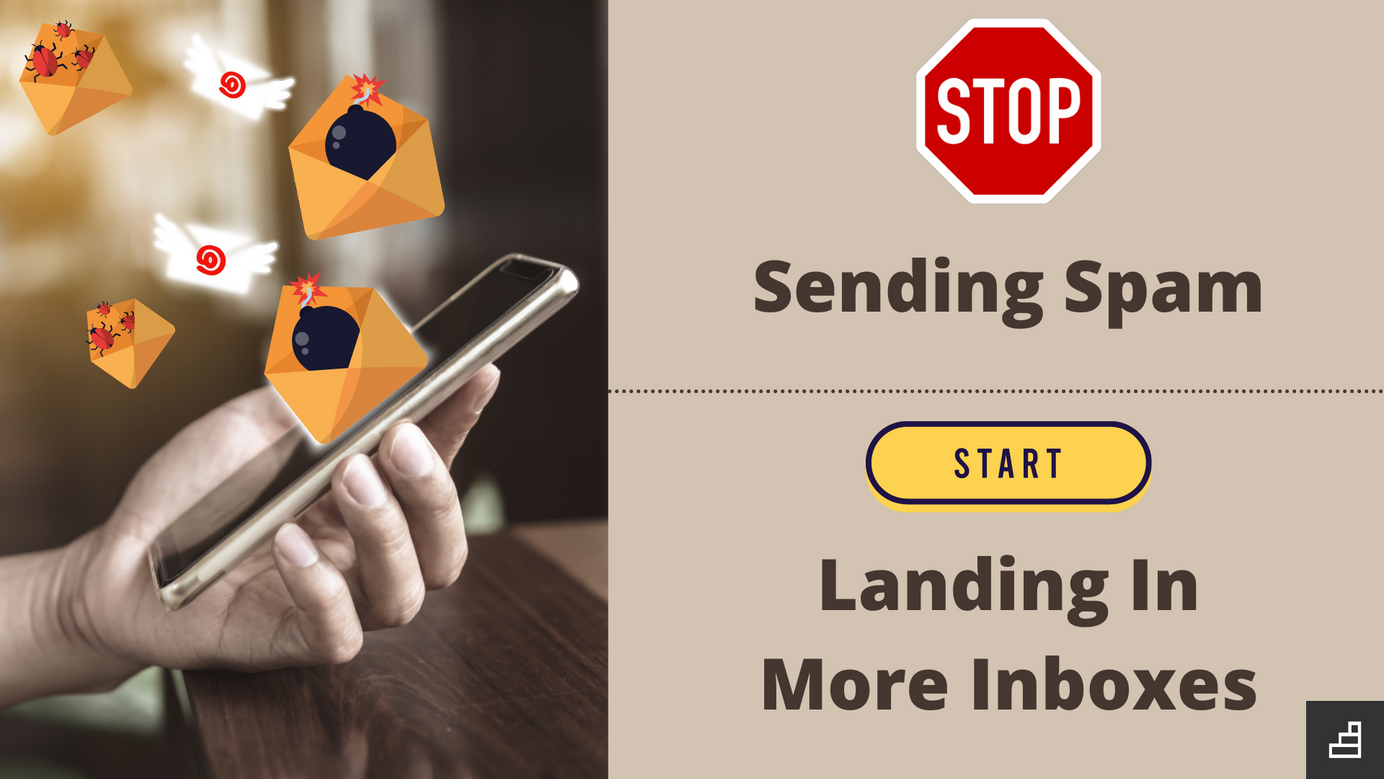
Spam Folder: A Step by Step Guide on How to Stay Out of It
Every day, consumers get a flood of emails into their inboxes. It’s hard enough to get people to look at the phenomenal content you’ve created, but getting your messages into your recipients’ inboxes is the first step toward a successful email marketing campaign.
When reaching out to your subscribers, the spam folder is one of the last places you want your emails. Having your messages land in spam folders impacts your open rate and may give you false impressions of your deliverability rate. Today we’ll explore the steps you can take to keep your messages from being flagged as junk and get them where you want them to go.
Step 1: Keep Your Inbox Warm To Stay Out Of The Spam Folder
When you initially set up a new domain or email inbox, you have to warm it up to the number of emails you want to send in a day from that address. Inbox warming isn’t complete when you reach your desired number; it’s crucial to keep your inbox warm to avoid any problems with ISPs.
If you finish an email campaign and stop using that address for a while, you let the address go cold and have to warm it up before starting your next campaign. The solution? Keeping your inbox warm by consistently sending out emails to your subscribers will carrying a couple of personal conversations to demonstrate engagement on both ends.
Additionally, if you do a marketing push to get more subscribers, you have to warm up to including the new subscribers in your mass emails. If you don’t, a sudden spike in email volume can send a red flag to ISPs.
Keeping your inbox warm gives you more sending flexibility while maintaining or improving your deliverability rate. Warm inboxes also directly influence sender reputation and keep you out of spam traps and spam folders.
Step 2: Be Compliant with the CAN-SPAM Act To Stay Out Of The Spam Folder
The CAN-SPAM Act of 2003 established email user protections against spam, phishing, and other undesired email messages. The Act was developed to protect consumers from malicious spam emails, but it also heightened inbox security. Staying CAN-SPAM compliant improves your deliverability rate and sender reputation, but it also saves you from paying hefty fines for every email found in violation.
Complying with CAN-SPAM is simple and isn’t a stretch for ethical email senders. CAN-SPAM Compliance includes:
- Using truthful information in your headers, including who the email is coming from and what the message is about
- Identifying that the message is an advertisement – You don’t have to put “AD” in the subject line, but the bottom of the email can include “This advertisement was sent by [Business Name]
- Including a valid mailing address
- Giving customers a simple way to unsubscribe from your email lists and honoring their request to unsubscribe immediately
- Not selling or transferring a customer’s email address to a third party, even if it’s included on a larger mailing list
- Monitoring any person or platform sending emails on your behalf – just because you pay someone else to run your email marketing doesn’t mean your business is exempt from penalties related to non-compliance
Step 3: Avoid Spam Trigger Words and Phishing Phrases To Stay Out Of The Spam Folder
As spammers have found more creative ways to circumvent spam filters, spam filters have become more sophisticated to increase their ability to catch spam. The issue this poses for marketing teams is that there isn’t a definitive list of words that will keep you out of spam folders.
The best thing you can do is write your emails like a human. While this seems simple, spam emails sometimes read like a robot wrote them, and spam filters catch that. This doesn’t mean that you can’t make a typo in an email ever again because we’re all human, but it’s essential to write marketing emails like you’re sending a personal message to a friend or a business message to your coworker.
Hubspot offers a list of words to use sparingly in your emails for high-volume campaigns. Some of these terms include:
- Free
- Chance
- Here
- Leave
- Remove
- Passwords
- Hidden
- Dormant
- Miracle
- Lose
- Problem
- Sample
- Stop
- Freedom
- Reverses
- Notspam
- Search engines
- Increase your sales
- The following form
- Will not believe your eyes
But it’s important to remember that this isn’t a definitive list of “if you use these words, you will go to spam.” Use them sparingly and in context rather than looking up strange synonyms to find replacement words. As long as your sender reputation is good and your inbox is warm, you should be fine.
Step 4: Make Sure Your DKIM, SPF, Sender-ID, and Domain Keys Are Set Up Properly To Stay Out Of The Spam Folder
Domain Keys Identified Mail (DKIM) and Sender Policy Framework (SPF) are two authentication tools that work to prevent scammers and spammers from sending messages on behalf of your domain. If you send out text messages as a part of your message marketing or to get new subscribers to your email list, a Sender ID allows consumers to recognize who is reaching out to them.
DKIM is used to verify that the content of an email hasn’t been tampered with since it was sent. Once DKIM is set up in your DNS settings, all messages you send will be encrypted with a digital signature that allows servers to determine that the content included is what was intended to be sent and that the messages are actually coming from the listed sender. Your specific signature is known as your Domain Key.
An SPF is a DNS record that you add to your domain where you can specify the IP addresses and email servers that are authorized to send mail under the selected domains. The server receiving incoming mail gets a packet of information before the email is delivered that specifies where the message is coming from. If the information matches the DNS record, the message is passed on to the inbox.
Step 5: Use a Spam-Checking Tool To Stay Out Of The Spam Folder
Before you click send, you can run your email through a spam-checking tool to see the likelihood of the message getting flagged as spam.
A few options for spam checking include:
Spam checkers are an excellent way to get an idea of how certain words may sound or if there’s something you missed. It’s like having an extra set of eyes on your emails, and all it can do is make your campaign stronger.
Step 6: Email Your Subscribers Regularly To Stay Out Of The Spam Folder
As we said in the beginning, you want to keep your inbox warm. Emailing your customers regularly is the best way to keep your inbox warm. Regularly emailing your customers means finding the happy medium between sending them too many messages and not sending enough. You don’t want to annoy them so much that they end up unsubscribing or flagging you as spam, but you want to email them enough that they’re consistently reminded of you and consider making a purchase.
Many analysts agree that emailing your subscribers once a week is safe and practical. Twice a week is the most you should send, and once a month is the least you should send. Your customers signed up for emails from you, which means they want to hear from you. So the more engaging your content is, the better relationships you’ll form with the people on your mailing list.
Newsletter
Join the newsletter to receive the latest updates in your inbox.





